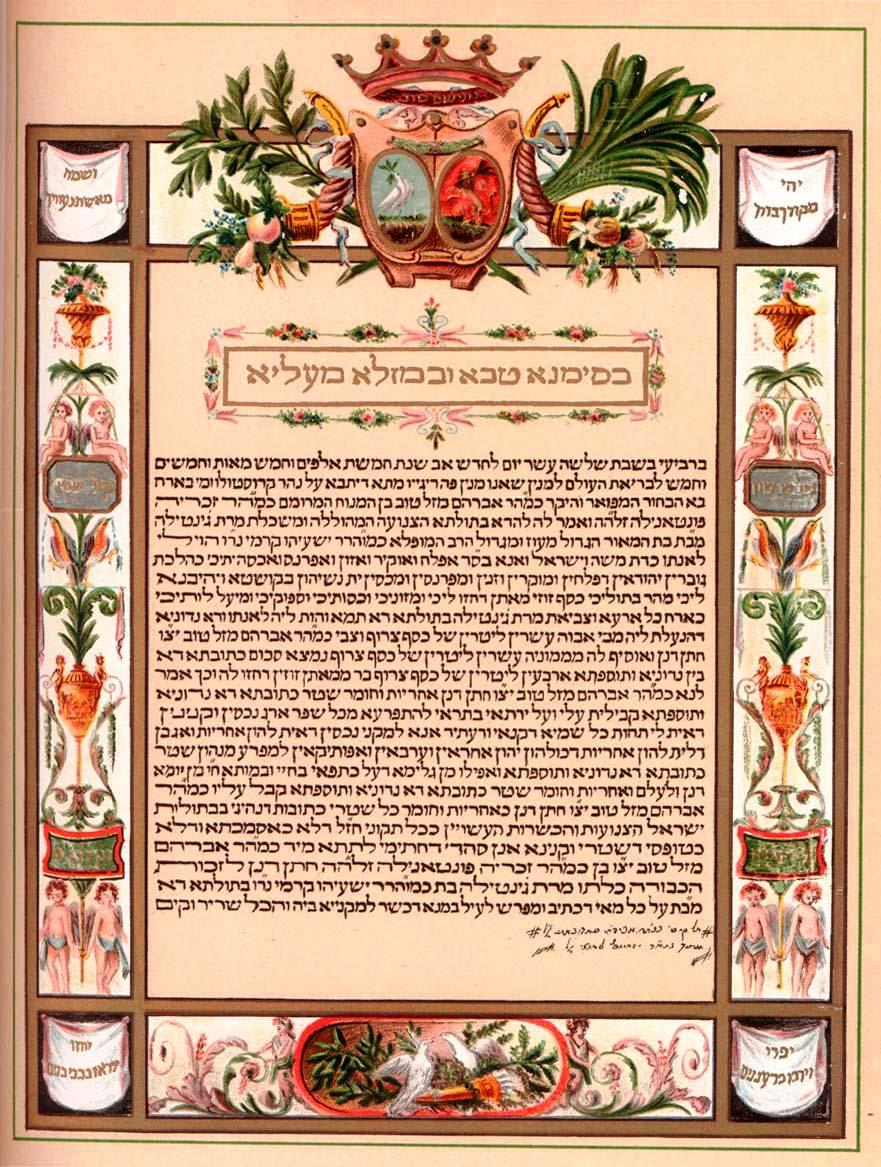The Coming Week’s Daf Yomi by Rabbi Adin Steinsaltz
This essay is based upon the insights and chidushim (original ideas) of Talmudic scholar Rabbi Adin Steinsaltz, as published in the Hebrew version of the Steinsaltz Edition of the Talmud.
This month’s Steinsaltz Daf Yomi is sponsored by Dr. and Mrs. Alan Harris, The Lewy Family Foundation, and Marilyn and Edward Kaplan
Ketubot 111a-b
Based on passages in Shir HaShirim (2:7, 3:5, 8:4), Rabbi Yossi ben Rabbi Chanina understands that there are three oaths that bind the Jewish people in their relationship with the non-Jewish world:
- That the Jews should not return to the Land of Israel be-chomah – “like a wall”
- That the Jews should not rebel against the nations of the world
- That the nations of the world should not oppress the Jewish people overmuch.
Rashi interprets the first oath to mean that the Jewish people should not return to Israel by force, all together (in fact, some manuscripts have ka-chomah, which would indicate “all together”). The Maharsha argues that it refers to the actual building of a wall – which would indicate a rebellion against the ruling nation. Such building could not be done without the permission of the nations that ruled over the land, as took place with the return of Ezra and Nechemiah at the beginning of the Second Temple era.
Based on his reading of the pesukim in Shir HaShirim, Rabbi Levi believed that each passage implied a double oath. Aside from the three mentioned above, he adds three more:
- That the end (ketz) should not be revealed
- That the end should not be pushed off
- That the secret should not be shared with the non-Jews.
Rashi understands that the fifth oath is a warning that sins and transgressions will delay the Messianic end of days, while the Maharsha suggests that it means that the people should not push off the ends of days in their hearts, but that they should believe that the Messiah will come swiftly.
There are also a wide variety of opinions regarding the secret that cannot be shared with non-Jews. While Rabbeinu Tam believes that it is the secret of the Jewish calendar and Rabbi Avraham Yaakov Neimark in his Eshel Avraham suggests that it refers to the oaths that are under discussion, it may not be connected with a religious issue at all. In a mosaic floor that was found in Ein Gedi, a curse is placed on the person who reveals the secret of the city to non-Jews. It is an apparent reference to a security secret; a way to enter the city.
Ketubot 112a-b
Masechet Ketubot closes with discussions about the wonders of the Land of Israel and how much the Sages loved the land. Among the stories that are related on our daf are the following:
When Rabbi Zeira went up to the Land of Israel and could not find a ferry to cross a certain river, he grasped a rope bridge and crossed. Thereupon a certain Sadducee sneered at him: ‘Hasty people, that put your mouths before your ears, you are still, as ever, clinging to your hastiness’. Rabbi Zeira replied. ‘The spot which Moses and Aaron were not worthy of entering, who could assure me that I should be worthy of entering?’
Rabbi Abba used to kiss the cliffs of Akko.
Rabbi Chanina used to repair its roads.
Rabbi Ami and Rabbi Assi used to rise from their seats to move from the sun to the shade and from the shade to the sun.
Rabbi Chiya bar Gamda rolled himself in its dust, for it is said in Tehillim (102:15) “For Thy servants take pleasure in her stones, and love her dust.”
The Gemara on the previous page (110b–111a) related that Rabbi Zeira moved from Babylon to Israel against the ruling of his teacher, Rav Yehuda, who believed that the passage in Sefer Yirmiyahu (27:22) forbade anyone from leaving Bavel and returning to Israel prior to the coming of the Messianic age. Rabbi Zeira disagreed, and interpreted that pasuk to be referring specifically to the Temple utensils that had been taken into exile to Babylonia.
According to the Rambam, the cliffs of Akko were especially beloved by Rabbi Abba because Akko was the northernmost point in Israel during the Second Temple era. Thus, travelers from Babylon to Israel would first step foot in the Holy Land in Akko.
Based on an alternative reading of the Gemara, rather than repairing the roads of Akko, Tosafot argue that Rabbi Ami and Rabbi Assi would weigh the rocks or examine them. When they were found to be heavier (or according to the Midrash Tanchuma, harder), they would then know that they had arrived in Israel. The Aruch attributes this to the passage in Devarim (8:9) that describes the stones of Israel as being iron.
In addition to his monumental translation and commentary on the Talmud, Rabbi Steinsaltz has authored dozens of books and hundreds of articles on a variety of topics, both Jewish and secular. For more information about Rabbi Steinsaltz’s groundbreaking work in Jewish education, visit www.steinsaltz.org or contact the Aleph Society at 212-840-1166.
The words of this author reflect his/her own opinions and do not necessarily represent the official position of the Orthodox Union.
